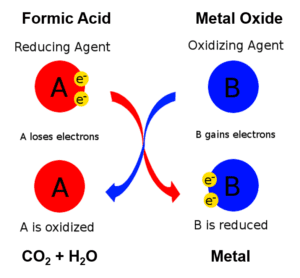Fluxless Soldering
Issues from using Flux
Traditionally, using flux was a necessary part of soldering. Flux helps to remove oxides from the metals being solder, improving the overall wettability of solder needed for high quality solder joints. Using flux, however, has its drawbacks:
- Flux can outgas during the reflow process creating solder voids.
- Flux leaves behind a residue which needs to be cleaned post reflow. If not cleaned properly flux residue can become acidic and diminish the reliability of the device.
- For flip chip and BGA applications, flux residue has the potential be trapped between interconnects, blocking underfill flow. This results in underfill voids and causes reduced reliability
Formic Acid Replaces the Need for Flux
- Fluxless reflow utilizes Formic Acid (CH2O2) vapor to act as a reducing agent to oxides on metal solder, replacing the need for flux.
- Eliminates issues related to residual flux, such as voiding
- Process steps related to flux, such as for pre-reflow fluxing and post-reflow flux cleanup steps are no longer needed, saving time, money, and floor space.
- Heller Industries was the first company to bring continuous operation fluxless reflow to market.
How Does Formic Acid Reflow Work for fluxless soldering?
The chemistry involved with formic acid reflow is a two-step process:
- During the soak phase of a thermal profile (between ~ 150C and 200C), formic acid vapor is introduced into the process chamber where it reacts with the metal oxides on the solder and creates formate salts.
- As temperatures raise to above 200C, the formate salts decompose to water, hydrogen, and CO2. This leaves the solder oxide-free and in its pure form.
Step 1: Metal formate is created (between 150C – 200C)
- MeO + 2HCOOH → Me(COOH)2 + H2O
Step 2: Metal formate decomposes leaving behind pure metal (Above 200C)
- Me(COOH)2 → Me + 2CO2 + H2
Formic Acid Reflow
Formic acid can be incorporated into most reflow profiles, but is recommended when peak temperatures are below 350C. It is most commonly used in power device packaging and semiconductor bumping and die attach applications, although it is suitable for other applications where the use of flux is undesired. Formic acid reflow is often combined with vacuum assisted reflow for enhanced void removal. For more information on Heller’s formic and vacuum machines, click the link below.
Forming Gas Reflow
We also offers forming gas as a process gas option for fluxless soldering reflow. Forming gas is a mixture of typically 4-5% Hydrogen and Nitrogen, and has the ability to act as a flux substitute for high temperature (generally >350C) reflow applications. If you are looking for a fluxless process with a high temperature profile, forming gas is the ideal fluxless option.

